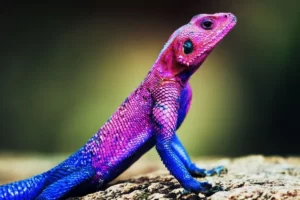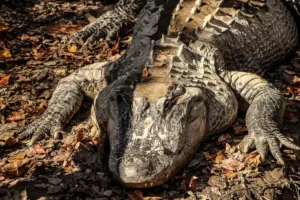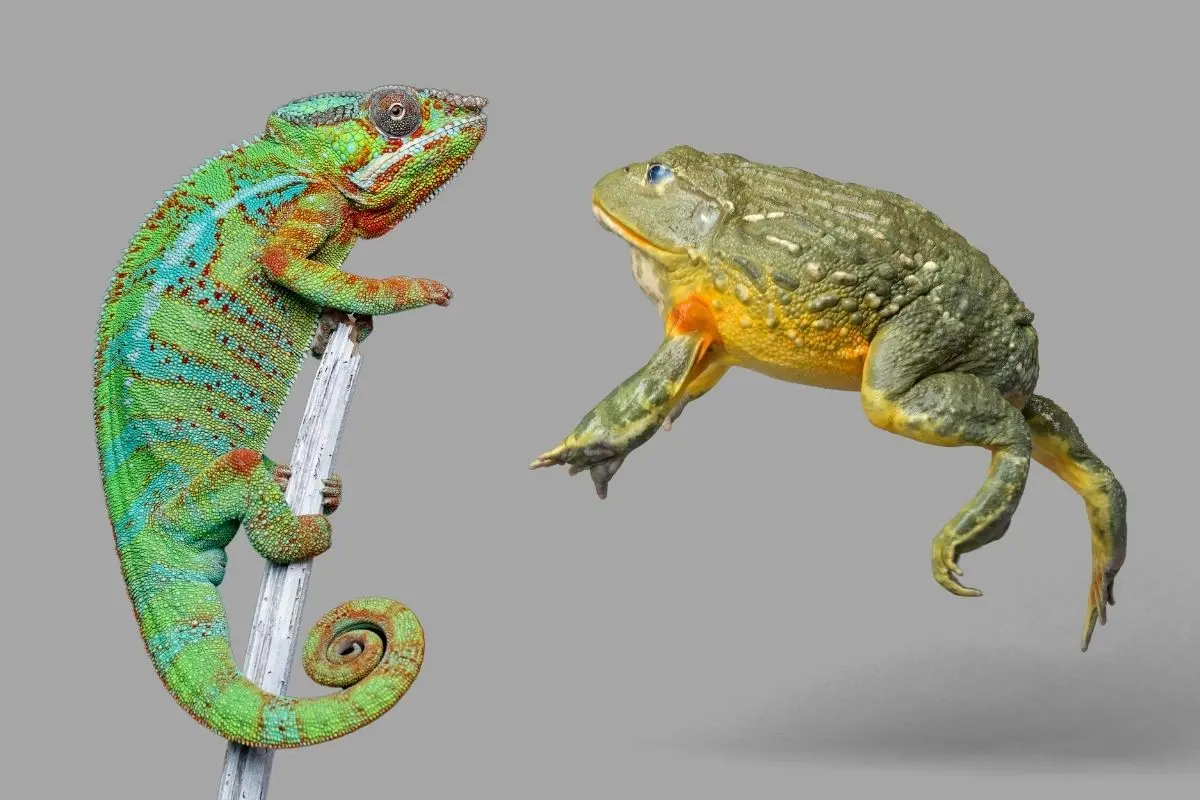There are many distinctive features of both amphibians and reptiles that can be used to tell them apart.
Two of the most obvious differences between amphibians and reptiles are the appearance of their skin and their habitats. Amphibians possess slimy, porous skin while reptiles have dry, scaly skin. Amphibians live both on land and in the water while reptiles only live on land.
While these are two main differences between amphibians and reptiles, there are many more which we will outline in the following article. We will also define what traits amphibians and reptiles have in common and provide some examples of both sets of animals.
- How Do the Reproductive Stages of Amphibians and Reptiles Differ?
- 5 Physical Feature Differences Between Amphibians and Reptiles?
- What Are the Habitat Differences Between Amphibians and Reptiles?
- What Are Some Similarities Between Amphibians and Reptiles?
- What Are Some Examples of Amphibians and Reptiles?
- Final Thoughts
- Related Articles
How Do the Reproductive Stages of Amphibians and Reptiles Differ?

All amphibians are born from eggs that are fertilized by the male after the female has laid them. On the other hand, reptiles can be born from eggs or via live birth of the female and fertilization takes place internally.
The eggs of amphibians are gelatinous, and the larval stages live in the water before maturing to adults which primarily dwell on land. Meanwhile, the eggs of reptiles are hard and have a protective covering.
5 Physical Feature Differences Between Amphibians and Reptiles?
- Amphibians possess both gills and lungs to help them breathe in either aquatic or terrestrial environments, while reptiles only have lungs since they are strictly land dwellers.
- Amphibians have webbed feet to aid with efficient swimming, while reptiles’ digits are separated, and limbs are equipped for moving swiftly on land.
- The eyesight of amphibians and reptiles also differ in that, reptiles can tell the difference between most color wavelengths, but amphibians can only see certain narrow bands of color
- While both amphibians and reptiles have the ability to secrete toxins, amphibians usually do so from the pores in their skin while reptiles harbor poison in their claw or teeth.
- The last main difference is the appearance of the tongue – while amphibians have an intact tongue, reptiles’ tongues are split in two near the end.
What Are the Habitat Differences Between Amphibians and Reptiles?

Amphibians and reptiles can occupy almost any kind of habitat, but the main difference is that amphibians need water to lay their eggs. In addition, their newly hatched larval stages can only live in water until they develop lungs and legs.
Reptiles, on the other hand, only need access to water to hydrate so they are not required to live near bodies of water. In fact, there are a lot of reptiles that dwell in deserts, you will not find any amphibian species hanging out there.
Because of the necessity of water, amphibians are also more vulnerable to pollutants than reptiles. An amphibian’s skin is porous and can absorb pollutants in the water making them sick very easily, while the skin of reptiles is hard and armor-like to protect them not only from physical damage but chemical assaults as well.
What Are Some Similarities Between Amphibians and Reptiles?
Both sets of animals are also ectothermic, or cold-blooded, which means they adjust their body temperature to match the temperature of their external environment.
Both amphibians and reptiles have three-chambered hearts and use camouflage as both a protective strategy from predators and a hunting tactic to sneak up on prey.
Most amphibians and reptiles possess four legs although the ones that do not, such as snakes in the reptilian category and caecilians in the amphibian category, descended from four-legged ancestors.
Both amphibians and reptiles evolved over 300 million years ago according to the existing fossil records. Both amphibians and reptiles can be found on every continent except for Antarctica.
What Are Some Examples of Amphibians and Reptiles?
Amphibians include all species of newts, salamanders, frogs, toads, and caecilians.
Newts

Newts are cute little amphibians and live in freshwater areas that look like a cross between a frog and a lizard.
They have some unique characteristics. For example, newts are poisonous, and can kill a person with their toxins.
They also have regenerative abilities, and can regrow limbs and organs they’ve lost.
Salamander

Salamanders are amphibians that look like a cross between a frog and a lizard. They have smooth, moist skin and long tails.
Salamanders spend part or all of their lives in the water.
They are very diverse creatures, some having lungs (like frogs), some having gills (like fish), and some breathing through their skin (like frogs).
Frogs

There are over 6,000 species of frogs in the world. Frogs can be found everywhere in the world, they are among the most diverse animals.
They are known for their jumping abilities, croaking sounds, bulging eyes and slimy skin. Tadpoles (baby frogs) have no lungs, they have gills (like fish). They grow lungs before they mature into a frog.
They need to live near water as their skin must constantly be moist. If it dries out the frog dies.
Frogs don’t drink water – they soak it into their body through their skin. Frogs catch their pray with their tongue.
Toads

Toads have dry warty skin in comparison to the smoother skin of the frogs. They have shorter legs than frogs and prefer to crawl, while frogs move in short jumps.
Most toads are green or brown, but toads also come in a variety of other colors that include red and yellow.
Toads have a fleshy tongue that is used to catch prey such as insects and worms.
Caecilians

The caecilians are a group of limbless amphibians that superficially resemble earthworms.
Caecilians live in the ground and stream substrates , making them much more difficult to find than frogs, toads, and salamanders.
Most caecilians need moist environments, but some species live in dry habitats.
Their skin is smooth and usually dark, but some species have colourful skins. Like some other living amphibians, the skin contains glands that secrete mucus which allows the caecilians to crawl over wet rocks without slipping.
Reptiles include snakes, lizards, turtles, crocodilians, and their famously extinct relatives – dinosaurs.
Snakes

There are over 3,000 different species of snakes, however only about 600 species are venomous.
Snakes come in a variety of shapes and patterns. Some species, like pythons and anacondas, can grow to be over twenty feet long and weigh hundreds of pounds.
The majority of snakes are covered in scales, making them reptiles. They have cold blood, which means they must regulate their internal temperature externally. Some species lay eggs while some species give live birth to their young.
Lizards

The world is full of lizards. In fact, there are more than 6,000 different lizard species.
Lizards are a varied species. Most lizzards can’t change color, but there are some that can. Most lizards eat insects and plants, but some eat smaller reptiles and mammals.
Lizards are cold-blooded animals, meaning their internal temperature matches that of their environment.
Some people keep Lizards as pets because they can be rather friendly, but some lizards can hurt or even cause death to humans.
Turtles

Turtles are cold-blooded and can live up to 200 years. Although they are reptiles, they belong to the oldest reptile groups in the world and date back to the time of the dinosaurs.
These creatures can easily be recognised by their bony, cartilaginous shells. Actually, each turtle’s shell is part of its skeleton and a turtle cannot come out of its shell like a crab or lobster.
They have been able to adapt to living in water as well as on land, and many species have even adapted to a specific type of environment.
Crocodilians

Crocodilians are any large predatory reptile including Crocodiles, Alligators and Caymans. There are 24 recognised species.
They are the largest reptiles on earth. They have good vision, an excellent sense of smell and taste which helps them find prey easily, but a poor sense of hearing.
Crocodilian are widespread across the world except Europe. They may be found in North America, Africa, India and Australia.
Dinosaurs

Dinosaurs lived in the Mesozoic era around 66 million years ago. Dinosaurs were fascinating creatures.
There were at least 700 species of dinosaurs, and they were present on every continent.
The smallest dinosaurs were about the size of chickens, while the largest dinosaurs were as many as 12 meters (40 feet).
The biggest dinosaur eggs were bigger than a basketball. These eggs contained baby dinosaurs, typically about 1 meter long.
Final Thoughts
While amphibians and reptiles may share some commonalities including their ability to regulate their internal temperature and camouflage as both a defensive and offensive maneuver, many features make each set of animals unique.
Amphibians live part of their life in the water as well as on land, have porous skin that can secrete toxins, are fertilized externally and hatch from eggs
On the other hand, reptiles live solely on land, have a dry protective scaly skin, harbor poison in their claws and teeth, practice internal fertilization and can either hatch from eggs or give live birth.
Both however are incredible are important to our world.
Related Articles
If you would like to learn more about reptiles here are some articles you may enjoy. If however you are more interested in amphibians check out our other site Amphibians Need to find out more.


